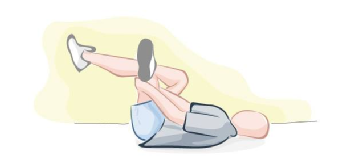












Gentle Running and Living
by Dr Patrick Salmon, PharmD, PhD
Member of the Barefoot Runners Society
Founding Member of the Tarahumara Spirit



Be gentle
to yourself
and others!
“Life is hard enough to add extra suffering to it”. We propose here a way to build a stronger, healthier and happier self through gentle running. Then, this “ascetic hedonism” can be translated into several aspects of life, to humbly contribute to a better world.

You can help your fellow humans and the world in general by sharing this site and its links.
You can join me at this email: drbarefootpat@gmail.com

Version française (en construction) à ce lien.


My blog
This page is under constant construction since I update it regularly with feedbacks from my students of all levels (beginners to below-3h-marathoners.
So, come back often for updates
Essential Stretchings, Massages and Precautions while building up the strong lower legs of a Natural Runner
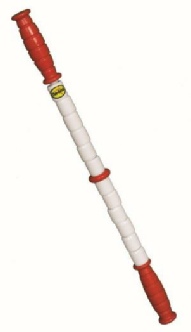
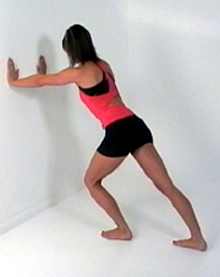

Prevention of injuries during your evolution into a Natural Runner
- When you thump, you run on square wheels, so it is normal to have various injuries at some point of your running life, due to this bad form (all joints are concerned and some muscles too).
- When you run correctly, you have virtually no chance of injuries, unless you push it really hard.
- However, the majority of NR injuries occurs during the transition from wumper to runner. They are of 4 types:
- Stress fracture of the metatarsal bones or bursitis below these bones. This is due to too much impact because you are still hitting the ground like a drop-hammer, and not using your foot-leg as a shock absorption device. Only remedy, land smoothly and soundlessly, so decrease your speed to reach that. As you legs get stronger and springier, you can increase speed while being soundless.
- Muscle cramp, muscle tear, and/or triggers of the Calf Muscle. This is due to overuse of this muscle while it has not become strong enough. Once you run naturally, you may have a soreness/stiffness after each run, even after a full transition. This is normal if it subsides in one day. If it lasts too long, i.e. your calves are still hard and cramped on your next run, you deal with it. To deal with this, the best is the massage with the stick. You may also need muscle massage from a specialist.
- Achilles’ tendonitis. This can be the most serious problem you have during transition into Natural Running, and may force you to go back to Wumping if you do not deal with it intelligently and patiently. The main exercise to heal Achilles tendonitis is Eccentric Stretching. If this is not enough, you may need Shockwave therapy. Those are the only 2 methods that really work on Achilles’ tendonitis.
- Plantar fasciatis. The plantar fascia is a big structure that connects the heel to the lower parts of the toes. This also can be inflamed if too much stressed. Only remedies are reducing speed and mileage (but no stop), and specific massage using a Golf ball. Like all other components of the leg and foot, it will heal itself as it gets stronger through patient and humble practice.
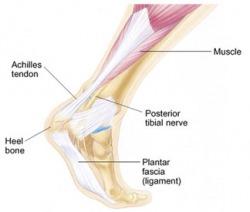
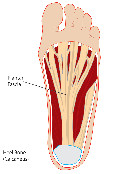
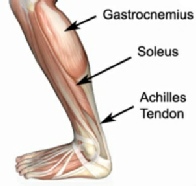
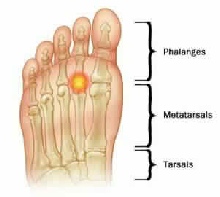

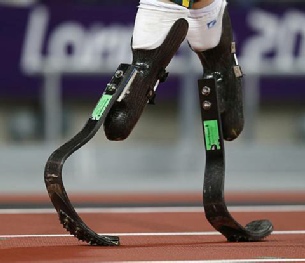
The Human Foot is a Masterpiece of Evolution
- Leonardo da Vinci -
So if you use it correctly, it is as good as the best running blade with the addition of real-time sensing of the ground and muscle tension adjustments accordingly.
Basic Stretchings to do after each run
- After each run, especially during your transition, but also when you are a full Natural Runner, do this stretching procedure, to relieve the tensions in your calves and tendons.
- As shown on the pictures on the right, preferably barefoot, stretch one leg to the max, and stay like this without bouncing, while keeping the heel on the ground and count to 120. While counting, feel where the tensions are. It could be in the calf itself, in the Achilles’ tendon or just below the back of the knee. Adjust the stretch to focus on this part, but still without bouncing. Then, switch leg, and do the same. And then, do another cycle. Total is 2x120 per leg.
The ball of the foot, where you must land smoothly!
- If you land too hard, you may experience pain in the ball of your foot.
- The less serious is inflammation of the fat pads which protect the metatarsal bones (Bursistis). Again, reduce speed, impact and mileage. Never take anti-inflammatory drugs, that may delay or prevent the repair process, or worse, mask an injury which is worsening (into metatarsal fracture for instance).
- The more severe is the fracture of the metatarsal bone. To do this, you need to land super hard, like a drop-hammer. This is not uncommon in runners who are obsessed by speed and cannot wait for a full transition to go fast. If it is broken, they need to stop running completely for 6 weeks until the bones are repaired.
Achilles’ tendinitis
- Achilles’ tendon is the biggest tendon in the human body. No other primate has it because they do not run. However, couch potatoes and wumpers all have atrophies Achilles’ tendons. Only patient training can transform this “weak link” of the runner into the most powerful and efficient energy-absorbing device in your body.
- Achilles’ tendinitis can occur close to the calf muscle, right in the anchors to the heel bone (enthesis), or in the middle.
- Again, you must reduce the speed and mileage but do not stop or take anti-inflammatory drugs, it will delay or stop the repair process.
- First thing to do is Eccentric stretchings as shown on the right. Do this 20 to 50 times on both legs, 2 to 5 times per day. Slowly, gently.
- If there is no improvement, see a specialist and ask for shockwave therapy.
- These are the only 2 standard methods that work.

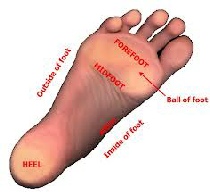
Calf Muscle stiffness, soreness and triggers
- Another common issue is soreness and stiffness of the calf muscle.
- This may also translate into small zones of the calf muscle where you develop constant cramps, called trigger points.
- In all cases, the only remedy is deep massage.
- And the best tool for this is the Stick.com. Choose the hybrid version.
- For general soreness/stiffness, use the whole stick as shown on the video.
- For triggers, apply the little red ring to press harder on the trigger zones. Still, do not go to excruciating pain. Adjust the pressure so that you feel it is relieving the tensions without damaging the fibers.
And finally, for Plantar Fasciatis
- Use a Golf ball to massage your plantar arch, all the way from the ball of the foot to the heel, insisting on sore spots but without having pain.
- You can do that anytime, anywhere, as often as you can.
- It is even good when you do not need it since it is super relaxing and help the blood to flow back from the legs through the veins..
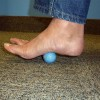
And last but not least, enjoy these moments you spend pampering your legs and feet, as you are in the process of gentle construction of a stronger body, and once done properly, you are virtually at zero risk of running injury.
